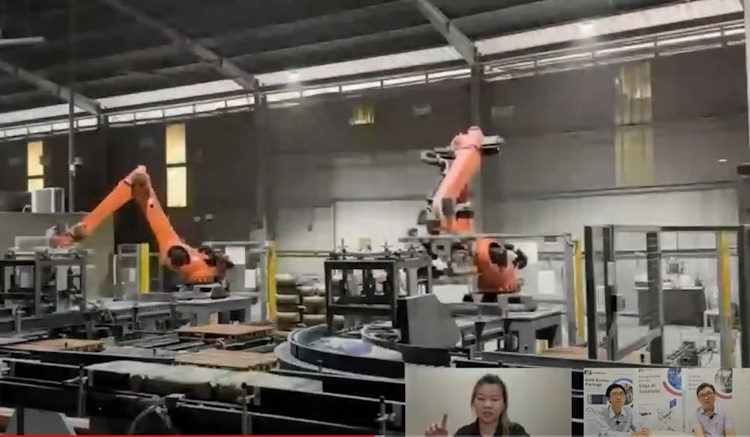During the recent AIoT live session, we invited one of our Eco system partner specialized in robotics to do a sharing on the real case that they have done. In this application, customer utilize Axiomtek Industrial PC system to execute and automate the process.
There are several different robotic technology available that help in the industrial transformation and Robotics arms come in various types and configurations, each suited for different applications and industries. Here are some common types of robotic arms used in industries:
Articulated Robots: These robots have rotary joints that mimic the movement of human arms. They consist of multiple segments (links) connected by joints, allowing for a wide range of motion. Articulated robots are versatile and widely used in manufacturing for tasks such as welding, material handling, and assembly.
SCARA Robots (Selective Compliance Assembly Robot Arm): SCARA robots have a horizontal arm structure with two parallel rotary joints for horizontal movement and one vertical joint for vertical movement. They excel in applications requiring fast and precise horizontal movements, such as pick-and-place operations and assembly tasks in electronics and automotive industries.
Delta Robots: Delta robots feature a parallel linkage mechanism with three arms connected to a common base. They are known for their high speed, precision, and agility, making them suitable for tasks like packaging, sorting, and food processing in industries with high throughput requirements.
Cartesian Robots (Gantry Robots): Cartesian robots operate on a three-linear-axis system (X, Y, Z) and move along orthogonal axes. They are often used in applications that require heavy lifting or precise positioning, such as CNC machining, material handling, and 3D printing.
Collaborative Robots (Cobots): These robots are designed to work alongside humans in a shared workspace safely. Cobots typically have built-in sensors and safety features to detect and avoid collisions with humans. They are used in various industries for tasks requiring human-robot collaboration, such as assembly, testing, and packaging.
Parallel Robots: Parallel robots have multiple actuators (usually three or more) that work together to control the movement of the end-effector. They offer high precision and speed, making them suitable for applications like pick-and-place, machining, and inspection tasks.
Hybrid Robots: Some robotic arms combine elements of different types of robots to leverage the advantages of each type. For example, a hybrid robot might combine the speed of a delta robot with the versatility of an articulated arm.
The session started with the sharing on what are the robotics technology available for the industries and follow by an interview with the Chief Marketing Officer of Smarsense Ms Yivian. You may watch this in your Youtube channel. check at the link below:-
https://youtube.com/live/hux2atzG9Wc
